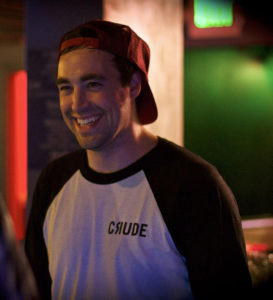Alaska is much more than just what’s portrayed on reality TV.

For those who live there, whether by birth or by choice, there’s more to the state than any romantic notions inspired by gorgeous commercials for cruises. In fact, there are three stages anyone who lives there goes through as part of becoming acclimated to the reality of the Alaskan worldview, according to Cody Liska, creator and writer for Crude Magazine and its accompanying podcast Crude Conversations.
“First is the romantic phase. You come here in June and it’s sunny and beautiful. Alaska is the most beautiful place I’ve been to in the summer,” says Liska, who’s traveled around the world and spent five years in Reno, Nevada, for college but who was born and raised in Anchorage. “Then you have phase two, which is this depressive state. You’re facing a little bit of the realities while mourning the death of the romanticism. Phase three is when you truly become Alaskan, understanding and being comfortable and finding solace in both of those things together.”
Crude Magazine focuses each issue on a particular topic or central theme. “The third issue is called Arrogant Minds and it details the hip-hop culture in Alaska. What I did for that one was I contacted all these people that were there from the ground up, the people who are pillars in that community. I had one write the forward. Others wrote pieces that exemplify that culture. Issue four was called Legacy and it followed the snowboard and skateboard history,” he says.
The publication, and its podcast, are both for people who live in Alaska and those who wonder what it’s like to live there.
“Reality TV … is the bane of the Alaskan’s existence,” Liska says. “It exploits a lot of ways of life here and gives a false impression about what it looks like to live here. When I set out to do this, I wanted to give a genuine understanding of the people that live here and the jobs that we do and the lifestyles we live. In that way, it’s for the people here, to look at it and say that’s totally us. For people in the lower 48, or in the rest of the world, (this is for them) to be like oh, OK, that’s what Alaskans are really like, they’re not Ice Road Truckers.”
